Prevention measures
A washing machine of the Indesit brand is a fairly reliable household appliance that meets all consumer needs, but it must be used in compliance with the necessary rules:
before starting washing, all clothes must be carefully checked for foreign objects in their pockets, it is important not to let them get into the tank of the machine;
washing of products on which there are a large number of finishing accessories is best done in special bags or covers - this will preserve the appearance of the product and prevent small parts from getting into the working mechanisms of the machine;
before washing clothes, it is important to fasten all available zippers and buttons on it and only then send it to the drum container;
the washing machine needs to carry out preventive cleaning of the drain filter at least once every 2-3 months;
it will also be superfluous to carry out an audit of the connection of the drain hose of the machine to the sewer pipe - this must be done regularly to prevent the possibility of clogging.
Try not to bring the current situation to the complete exit of the equipment from working condition, requiring major and expensive repairs in the conditions of a service center.
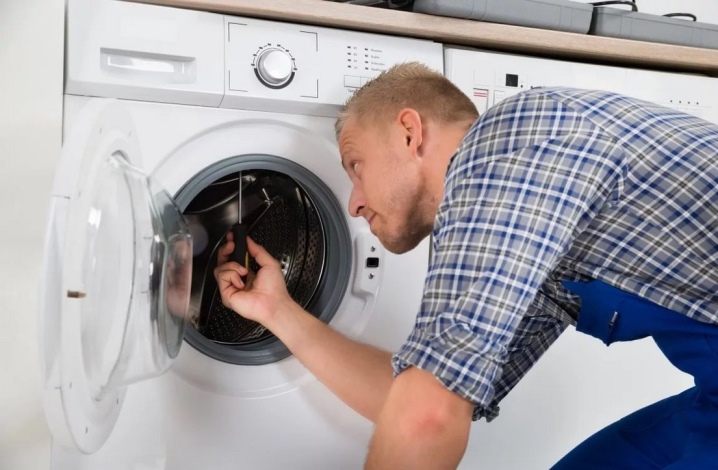
About why the Indesit IWSC 5105 washing machine does not drain water (error F11) and what to do about it, see below.
How to understand that the machine is correctly connected
To eliminate such a problem as endless water drainage, the purchased washing machine must be connected correctly. The hose must be fastened in such a way that it is not level, but above the tank. Therefore, it is better to connect it to a siphon or pipe so that the hose is at least half a meter above the floor level. If the connected machine constantly fills with water, be sure to check exactly how the drain is located.
 Correct connection of the washing machine
Correct connection of the washing machine
To do this, you need to wait while the machine picks up liquid. After that, you should turn on the mode in which it drains the water. When the liquid begins to decrease, press the on / pause button. If, during a pause, the machine still drains water, most likely the problem is in its connection. It can be difficult to immediately determine the discharge of water during a pause, so it is better to carefully observe its behavior in the tank. If in the pause mode, the drain has stopped, most likely you will have to make repairs or replace parts, and not reconnect.
If the washing machine has functioned properly for many years, and recently it is constantly picking up water and draining it, the problem lies precisely in the breakdown of internal parts. In such a situation, the washing machine must be disconnected from the mains. After that, close the fluid supply hose and drain the water using a drain filter.
However, it is possible to make repairs or replace parts on your own when a person, having realistically assessed his capabilities, realizes that he will cope with the problem. It should be noted that the repair of the washing machine is carried out only if it is completely de-energized.
Rules for the operation and prevention of the washing machine
In order for the washing machine to work properly for many years, you need to familiarize yourself with the tips for its operation:
- Do not overload. All device models have their own restrictions on the number of items that can be loaded into them. If you overload the machine, it will start to wear out, due to which its service life will be significantly reduced.
- Check clothes before washing. Often in clothes and underwear you can find paper clips, coins, pieces of paper and much more. All this debris should not get into the drum, and therefore, things are carefully inspected before washing.
- Use a surge protector. Many people plug the device directly into an outlet.However, in order to protect it from sudden voltage surges, it is better to use a surge protector.
- Clean the filter regularly. The filter must be cleaned from dirt at least 1-2 times a year.

Burnt Teng
The reason why the machine takes water and immediately drains it, and does not react at the same time on pressing the buttons, may consist in a burned out heating element. In this case, you can turn off the device only by pulling the cord out of the socket. Such problems occur when trying to use modes with water heating, the "cold" wash remains working.
This means a malfunction of the heating element - heating element. The control unit does not detect the presence of hot water and does not proceed to the next washing stage after the water has been filled. This problem often occurs with older car models. On the indicator of new models of "Samsung" or "Indezit", equipped with a self-diagnosis system, in this case, an error code will be displayed.
You can check the correctness of the assumption using a multimeter:
- remove the back cover of the washing machine;
- remove the heating element, gently prying it with a screwdriver;
- put the multimeter in dial mode;
- connect the ends of the multimeter to the two extreme protruding parts of the heating element.
If there is no reaction of the device, it means that the heating element is broken and must be replaced. It can be purchased from a store and can be easily installed by yourself. The main thing is not to overtighten the gum when installing.
Additional causes of problems with heating elements:
Scale on the device due to hard water. Solution: it is necessary to remove the heating element, soak in vinegar and remove plaque with a brush.
Loose or oxidized electrical contacts. Solution: strip and tighten the connections.
Failure of regulation in the thermostat, which is responsible for measuring the water level and turning off the heating element. Solution: call a specialist.
Advice! In order for the heating element to serve for a long time, it is necessary not only to make a loop on the hose, raising it by 60 centimeters, but also to make the drain point itself higher, "building up" a piece of pipe to it. This will save you from unnecessary drainage of water, and the heating element will have to work with less load.
Reasons for the lack of a set of water
There are eight reasons why a washing machine stops pumping water.
Valve closed
Often, the equipment does not receive water due to the fact that the valve is closed. Many inattentive people who forget to open the tap for the normal supply of liquid to the washing system face such a banal problem. There are various situations when you need to close the valve. Most often this is done before carrying out repairs that are related to water supply. Also, some people turn off the tap for safety, to prevent water from leaking.
Therefore, before you start washing, you need to make sure that the tap is in the correct position.
Blockage in the inlet hose or filter
Another common problem that prevents water from flowing into the washer is a clogged hose. The problem begins to manifest itself in the summer, when repair work on the water supply begins and the water supply is turned off.
If the water does not flow well, you must disconnect the hose and check it. If there are residues of debris in it, you will have to start cleaning it. To do this, clean the walls of the pipe with a wire and rinse it with water.
Malfunctioning machine valves
The liquid enters the washer system using special valves, which differ in a simple operating principle. In order for the water to get inside, voltage is applied to the valve. After that, it opens and closes after a power outage. Sometimes the valves stop responding even after connecting the machine to the electrical network. This happens due to short circuits within the system or voltage surges.
Damaged wiring
If the washing machine hums too much and does not draw water at the same time, then the wiring is damaged. There are two reasons that lead to disturbances in the functioning of the wiring:
- Pulling wires.Manufacturers sometimes stretch the wires too much, which shortens their lifespan. Due to the increased voltage, some of them begin to break off.
- Use of thin wires. Sometimes the wiring in the washer is made of thin elements that stop working correctly when there is a voltage drop.

The above problems lead to the fact that the valves are not energized and water does not enter the drum.
Failure of the control module
Each modern washing machine is equipped with an electronic module, which is a mini-computer, consisting of RAM and a central processor. The module monitors the operation of equipment when it washes dirty clothes. Breakage of this part can manifest itself in different ways. Sometimes the machine does not turn on at all, but there are times when, due to a module malfunction, water stops pumping.
Incorrect operation of the pressure switch
Modern washing machines independently determine the amount of water in the tank. A special device is responsible for this - a pressure switch. Over time, it starts to work worse and transmits incorrect data to the control board. A faulty pressure switch cannot determine if the tank is full or empty. The clipper will not fill with water until the part is working properly.
The hatch is not closed tightly
A banal reason for the lack of water is a poorly closed washing machine tank. Sometimes it is difficult to tell if the door of the device is completely closed. If it is ajar, the machine will not be able to start the process of filling the tank with water. Therefore, you must make sure in advance that the hatch is tightly closed with a latch.
Drain pump in a cliff
If the washer does not pick up liquid, you need to check the drain pump. It seems to many that the drain has nothing to do with pouring water, but this is not so. If the technician has trouble draining the used fluid, it will not refill the tank with new water. Therefore, you need to disassemble the machine and make sure that there is no breakage in the drain pump. If it fails, you will have to purchase a new pump and replace the old one.
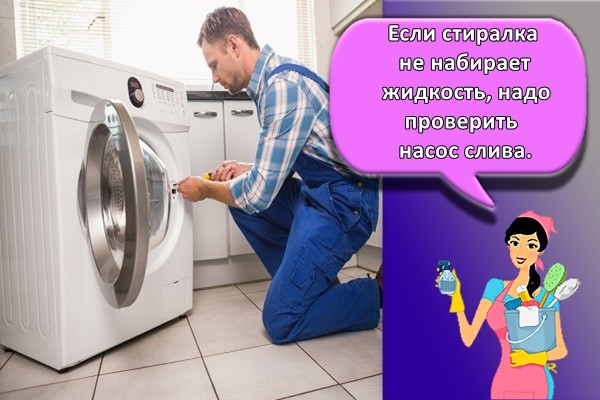
Reasons for not draining water
The root of the problem that the machine does not drain water and buzzes may lie in various points. Before deciding what to do to fix the breakdown, you should figure out what is the cause of the broken equipment. The following are the likely reasons why the washing unit does not want to drain the water and hums:
- An error in the choice of the washing mode. In some washing machines, for example, the Samsung brand, there is a mode that assumes no spinning of the laundry and no draining process. This function is intended for delicate fabrics. When choosing it, the machine does not drain water and hums. Therefore, before disassembling the equipment or calling the wizard, you should make sure that the "No drain" operating mode is not activated.
- Water may not drain out due to the fact that the drain hose is clogged or kinked, which obstructs the flow of water, and the machine begins to hum. Therefore, you need to check the hose for water flow. If the water must be drained through a siphon, as in the Indesit models, then it must be cleaned of dirt and debris. After the cleaning procedure, the machine will drain the water through the hose, ensuring a well-coordinated operation.
- Clogged filter. Before the washing procedure, hostesses often forget to check the contents of the pockets. This becomes the reason for the clogging of the filtration system of the Bosch washing machine, and other models. As a result, the machine does not drain and hums. Small parts such as paper receipts, coins, buttons, or small children's toys fall into the filter. This part of the washing machine should be periodically checked for clogging and foreign parts. If this is not done, then the machine will fail and stop functioning, drain the water.
- A breakdown of the pump is another reason why the machine hums, not wanting to drain the water.In brands such as Ariston, pump failure can occur due to the long service life of the equipment. Also, the pump can become clogged due to the ingress of a foreign part through the filter. Because of this, the flow is blocked, the water does not drain, and the machine hums at the same time. Hair, wool, long clothing fibers and threads can wrap around the pump. In order to detect a malfunction of this type, a complete analysis of the washing equipment for details is required. Therefore, it is better to entrust this business to a professional, a repairman.
- A clogged sewer system is also a common reason the washing machine hums but is slow to drain. The ingress and accumulation of large debris creates a plug in the sewer pipes. With the help of special tools and tools, you need to break through the water in the sewer. But it is better to call a master for these works, who will perform the work at a professional level. To find out the reason why the washing machine hums and does not drain the water, you need to unscrew the drain hose and place it in a sink or deep container. Next, you need to start spinning. If water poured out, then the problem is in the sewer system. If nothing has changed, and the machine is still humming, then the problem is inside the washing equipment.

As you can see, the reasons why the spinning process is not performed and the water is not drained can be very different. To identify a malfunction, a comprehensive inspection of the washing unit is required.
First aid car
Some malfunctions in which the machine does not drain water can be identified and eliminated without opening the case.

Control board failure
In the event that the washing modes are performed incorrectly, the processes stop at some stage or the modes incorrectly replace each other, a possible reason is a failure in the operation of the electronic board. Failure, as a rule, occurs due to voltage drops in the network that occurred after the washing mode was turned on. Such differences are not uncommon in old houses.
The machine is disconnected from the mains by removing the plug from the socket and kept for 10-15 seconds without power connected. During this time, the capacitors in the electrical circuit and on the control board are discharged. The program will be "reset" and you can re-start the second wash. The device is plugged in and they try to start the wash. If these actions do not work, they continue to look for the reasons.

How do I drain the washing machine?
How to drain the remaining water from the washing machine must be described in the instruction manual.
The filter and emergency drain pipe are usually located at the bottom of the front of the washing machine. The installation site can be masked with a hinged cover. To access the filter and emergency drain, open the cover with a flat screwdriver or the tip of a knife. Some instruments do not have a cover and can be accessed directly from the front panel.
There may be a small piece of hose under the cover to drain the water. In other models, a tube of a suitable diameter is connected to a special fitting on the filter body. It is necessary to clarify the information on the emergency draining rules in the instructions for the product.
Substituting a container with low sides, the liquid is drained from the tank.
After the water is drained, a small amount of it remains in the hoses - to eliminate its leakage, you must use a dry cloth.

Checking the drain hose
The following common causes of malfunction are:
- clogged drain hose;
- kinking or kinking the hose.
Kinks are removed by straightening the tube.
Remove the blockage by disconnecting the hose and flushing it with a stream of water. If this does not help, use a piece of flexible elastic wire for cleaning.
Care must be taken not to damage the walls of the hose.
A spare hose can always be found at the store. To do this, you need to take with you a piece of the old one.
What to do if no malfunction is found? Continue searching.

Clogged filter
Usually, the filter mesh is separated from the body by counterclockwise rotation, but in order to prevent damage, the information is checked in the instructions for the washing machine.
Pliers can be used for easy removal. After removing the filter element, assess whether there is a possible clogging from the debris present there, clean it and install the filter in place.
In some models, the condition of the pump impeller can be checked through the hole in the filter housing.
Breakdown of the pressure switch
When the pressure switch is broken, its tubes are cracked or the contacts are oxidized, the machine draws water without draining it. In such a situation, you need to remove the cover on the back of the machine to access the sensor. If contacts are found to be oxidized, they should be thoroughly cleaned. In most cases, this action will immediately get rid of the problem. The clogged pipe must be emptied of debris.
If cracks are visualized on it, it is worth trying to seal it using epoxy glue. If, after these actions, the washing machine still fills and drains water too often, you should either completely replace the water level sensor, or contact a specialist to fix the problem.
How to replace the water level sensor:
- a thin hose is attached to the water level sensor and to the compression chamber, which must be disconnected;
- disconnect the terminals;
- remove self-tapping screws;
- dismantle the faulty pressure switch;
- install a new water level sensor;
- fix it with self-tapping screws;
- carefully connect the terminals;
- install a thin hose in place;
- assemble the case.
 Water level sensor
Water level sensor
If there is any doubt that the problem lies in the water level sensor, the body of the machine need not be assembled before carrying out a test wash. Then, to check the machine's functionality, start the washing and rinsing functions without laundry. If there is no water drain, reassemble the housing.
Cleaning and repairing the filter is the first step
The most common cause of this problem is a clogged drain filter. Therefore, the first thing to check is the filter. The standard procedure for most modern washing machine models is:
- Determine the location of the filter, usually the lowest part of the machine. For easy access, the filter is closed with a removable plastic cover;
- drain the water through the hose, placing it in any container of sufficient volume;
- if there is no hose, place a container to the place where the filter is to be installed, unscrew and remove the filter.
- thoroughly clean the filter and the slot for its installation;
- put the filter back, screw it clockwise;
- start the washing machine.
If the problem was in the filter, then the device will work normally.
Cases requiring qualified repair
If the drain does not work, then you need to examine other elements. In particular, a blockage in the water supply system to which the machine is connected can prevent the drainage. To check, unhook the drain hose from the drain and place it in a sink or other container, then attach it back and give the command to drain.
If the previous step did not help, we check the drain pipes of the washing machine. Dirt that settles during washing can get into these pipes, clogging them up tightly. The problem here is that you have to partially disassemble the car to access them.
In addition, the washing machine stops draining when the drain pump fails. In such a situation, voltage continues to be supplied to the pump, but it does not function due to defects or wear. Here, one cannot do without calling a repairman for washing machines at home.
The most difficult breakdown in which the machine does not drain water is the failure of the electronic control module. Fortunately, such a malfunction is quite rare.You can identify problems with the unit by malfunctions during the operation of the washing machine in different wash programs, light indication of a breakdown, unexpected shutdown during operation. This will also require the help of a qualified master.
It is best of all, if the drain mechanism of the machine fails, to seek professional help from specialists. Our company performs prompt and high-quality repair of washing machines at home in Rostov, we work with any brands and models of such equipment, while the cost of our services is very attractive. We guarantee accurate identification and complete elimination of the cause of the drain system failure. If it is impossible to fix the problem at home, then we will take the equipment for repair in a repair shop.
Pump breakdown - repair is not for amateurs ↑
If the two problems described above could be solved without special knowledge and skills, then only people who have certain knowledge of the device of such equipment can diagnose and eliminate the pump breakdown. Unfortunately, in most cases, the pump cannot be repaired at all and needs to be replaced. But the final verdict is not always so sad - sometimes the work of the pump can be impeded by a foreign object that has got there. Also, a blockage can lurk in the pipe connecting the pump to the tank.
 You can disassemble the machine only after disconnecting from the electricity and water supply
You can disassemble the machine only after disconnecting from the electricity and water supply
In modern units, access to the pump is not difficult and is carried out either through the bottom, or through the front or rear wall. The most convenient way to work is through the bottom - it can be protected by a thin plastic cover or not closed at all. You will have to work a little with the front wall, since inside it is attached to the hatch locking device. If neither the front panel nor the bottom have screws that allow dismantling, you will have to unscrew the back wall and remove the pump in another way. In any case, you will need to remove the filter first.
The pump is located on a "volute" type distributor, from where it must be disconnected by loosening the fastening clamps and unscrewing all existing fasteners. When all screws have been removed and the latches are open, the pump can be pulled out with a gentle twisting motion. The new pump in the washing machine is installed in the reverse order.
It is important not to overlook a single screw and correctly attach the drain to the pump hose and pipe tank
 To remove the pump, you will need to carefully unscrew a few fasteners and turn it counterclockwise.
To remove the pump, you will need to carefully unscrew a few fasteners and turn it counterclockwise.
If you do not have your own experience in dismantling complex household appliances or measures taken on your own do not lead to a positive outcome, you will have to turn to professionals. The breakdown could be related to other critical details or hidden in the software. An experienced craftsman will quickly eliminate the cause, and at the same time clean those parts that are not accessible to non-professional users, giving the machine at least another year of perfect work.
Independent solution
People who decide to repair the washing machine on their own should familiarize themselves with the repair recommendations.
If there is a problem with the valve
When water does not flow due to damage to the valve pipe, you need to start replacing it. To get to the broken part, you need to dismantle the top cover of the machine. Then the branch pipe is carefully unscrewed so as not to damage the fasteners. Before installing a new part, all joints are thoroughly greased with glue for a secure connection. The bonding areas are sealed with a sealant that prevents water from leaking out.
If the heating element is faulty
A malfunction of the heating element leads to the fact that water stops collecting in the drum. To check the performance of the heating element, you need to disconnect the washer from the electricity and check the part with a multimeter. If an open or short circuit was detected, you will have to replace the heating element with a new one.It is better to entrust the replacement to professionals who know how to repair washing machines.
Door lock
If water does not fill up due to a broken door lock, you will have to replace the lock with a new one. This is a difficult job that is best left to a specialist.
Main reasons
Faced with the incorrect functioning of the equipment, you need to understand the causes of the breakdown. The subsequent repair of the washing machine depends on the established cause.
Incorrect hose installation
If a malfunction is detected when trying to perform the first wash, it indicates an incorrect connection of the hose to the sewer system. Placing the drain hose under the tank causes liquid to constantly flow down the drain. The internal structure of the machine signals a lack of water, and it re-flows, which causes constant circulation.
The hose must be connected to the equipment above the tank. As a rule, it is fixed to a siphon or to a sewer pipe, leaving an elevation of about 60 cm from the floor level. Therefore, if the machine is draining and trying to re-draw water at the same time, you need to check the location of the hose.
There are situations in which it is not possible to check the connection point of the hose to the machine due to a protrusion on the wall, a screen on the bathroom, and other restrictions. In such cases, to check, you need to turn on the machine in test mode and wait until the drum is filled with water. Then it remains to turn on the drain, during the execution of the task, press pause and monitor its level.
Blockage in the sewer system
The accumulation of debris in the sewer becomes another reason due to which the washing machine picks up and immediately drains the liquid. The constant use of drains by all residents of houses periodically leads to filling the riser, reducing the pressure in the pipes and pushing water out of the drum into the sewer.
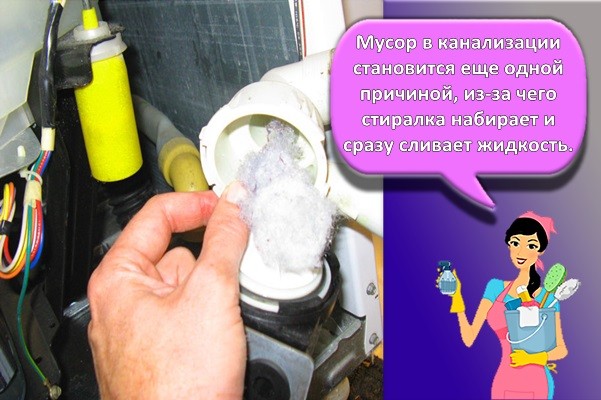
If there is a problem, you can disconnect the drain hose and put it in the tub or sink while washing. This recommendation will help you freely use the equipment until the problem is completely eliminated.
Valve malfunction
Washing machines are equipped with an inlet valve, which is designed to control the flow of liquid. A malfunction of the valve leads to the fact that it does not shut off the water, and in the event of a weakening of the membrane, liquid can leak out even when the valve is in the closed state.
Breakdown of the pressure switch
The pressure switch in the washing machine is responsible for regulating the level of liquid in the drum. After filling to the required level, the sensor sends a signal and the water flow stops. If the machine worked properly, and then began to drain the water immediately after dialing, the reason may be a breakdown of the pressure switch. A component fails in the following cases:
- oxidation or contact closure;
- violation of the membrane tightness;
- blockage or mechanical damage to the pressure tube.
It is not recommended to postpone the repair of a broken pressure switch, as a malfunction can lead to a number of negative consequences. In particular, the incorrect functioning of the pressure switch provokes an overflow of the drum and fluid leakage.
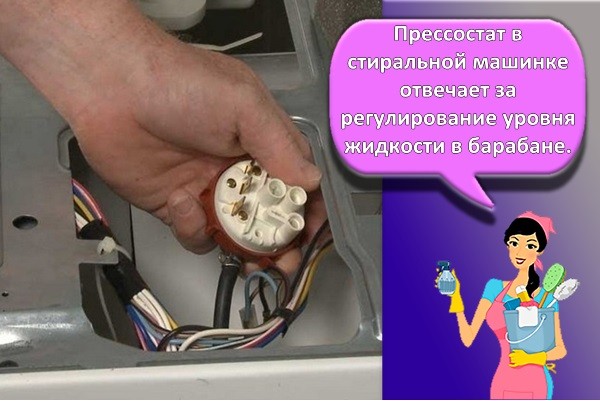
Electronic module failure
Improper performance of tasks for the collection and drainage of water can be caused by a malfunction of the electronic module of the washing machine. If the equipment is equipped with a display, then in the event of a breakdown, an error code will be displayed on it, which will help to more easily understand the causes of the problem. When faced with an electronics failure, it is recommended that you turn the equipment off and then on again as a first step. If this does not help to solve the problem, it is better to seek help from specialists, since it is rather difficult to independently understand the functioning of the electronic module.
Tank leak
Mechanical damage, due to which cracks appear on the tank, causes leakage.In many machines, tanks are made of plastic, so their reliability does not always provide adequate protection. Damage can occur as a result of external influences or if various objects accidentally fall into the tank.
How to fix a washing machine yourself?
We clean the filter

After that, let's check our filter. It is located at the bottom of the case from the front. During work, some water may spill onto the floor. Therefore, it is better to prepare a rag or a small empty container in advance. If you see that the filter is clogged, then simply clean it of any foreign matter. This procedure can solve the problem you are experiencing.
For clarity, we will demonstrate the entire process of removing the filter of the washing machine in the video:
Checking the pipe
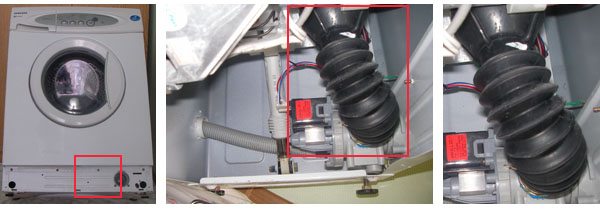
In order to gain access to it, it is necessary to unscrew the bolts that fix the fasteners of the drain unit. After that, we take out the branch pipe, remove the fixing clamp. Then we drain the water from the branch pipe into a pre-prepared container.
After that, you need to check if our branch pipe is clogged with any debris. To do this, squeeze it slightly in different places. If you feel a blockage, it must be removed. After that, we collect the entire structure in its original state.
Impeller
If this did not solve our problem, then move on to the next possible malfunction. Now we will check if the pump impeller has jammed. It is located directly behind the filter. If even a small thing gets into it, it can cause a malfunction. Therefore, try turning the impeller first. If it rotates, and you can't see any extraneous things, then everything is in order with it. And if you find something superfluous, for example, a coin or a button, remove it. If this did not help, then it remains to check the drain pump (pump).


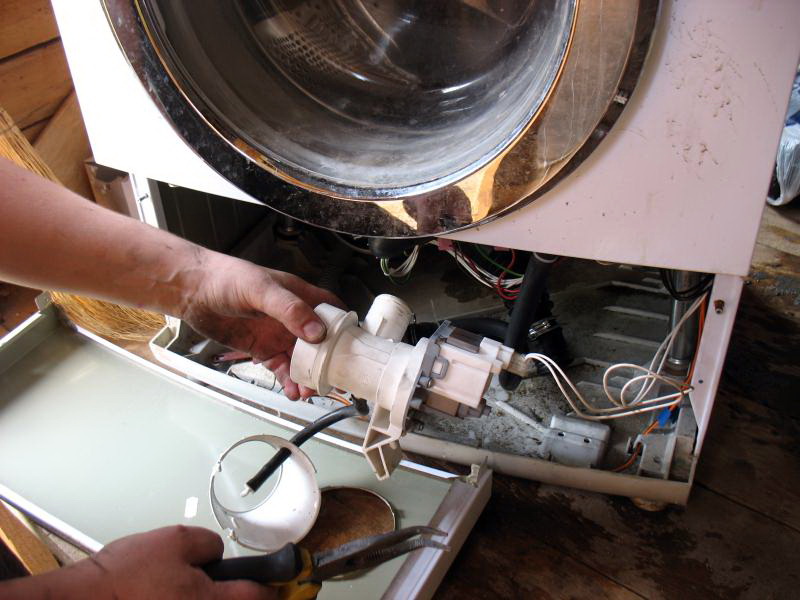

![Washing machine does not drain water - reasons and solutions - [site: name] 2stiralki.ru](https://flwn.imadeself.com/33/wp-content/uploads/7/f/2/7f229dcd7250c52ec9d4996627663813.jpg)


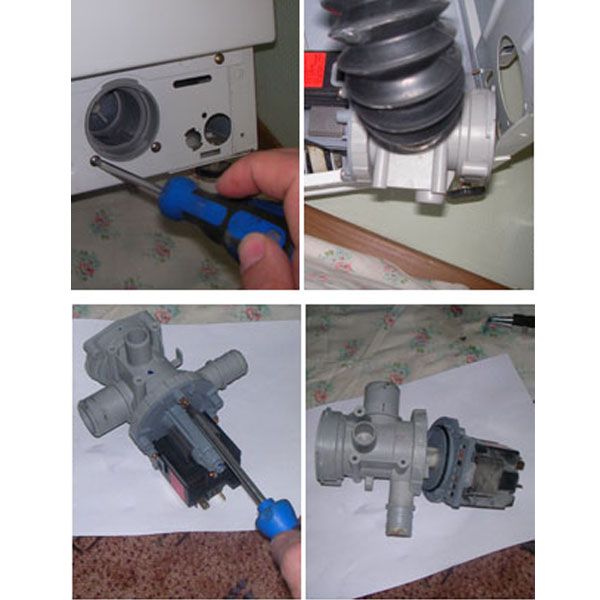
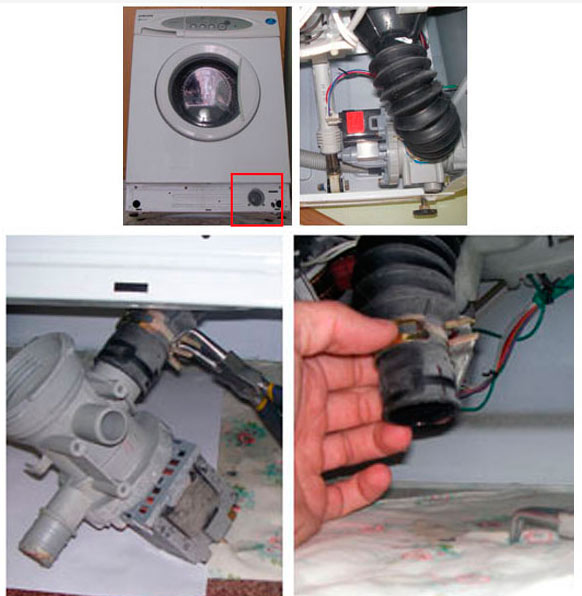






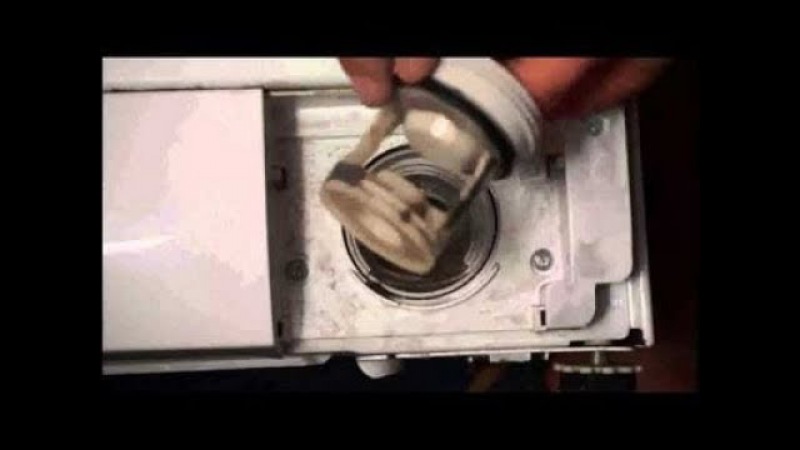
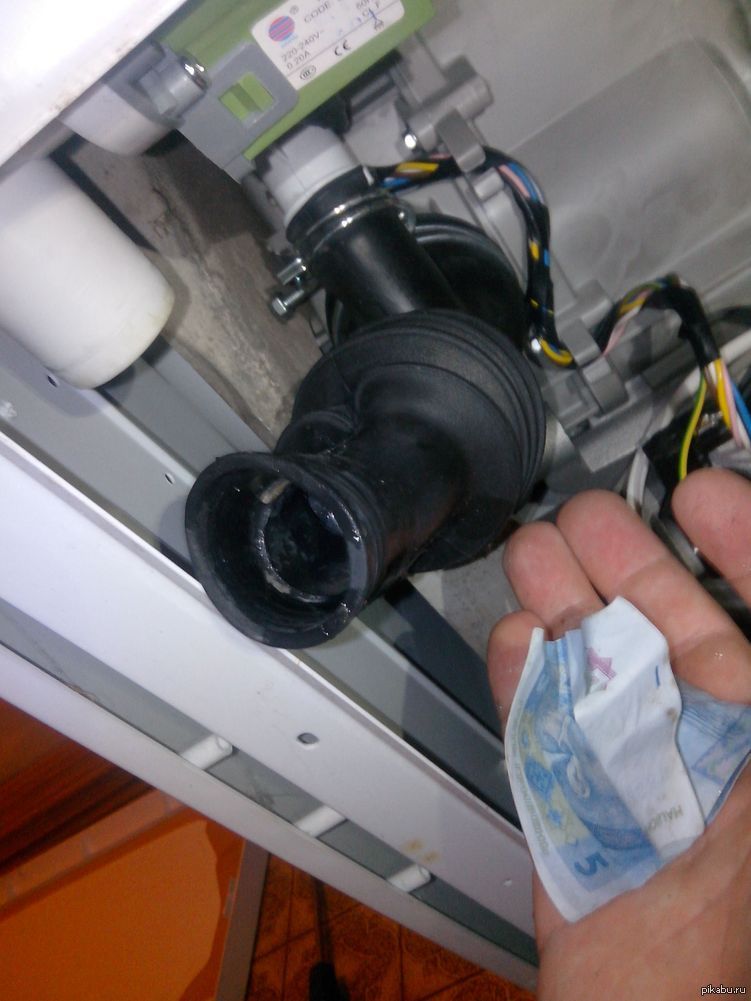
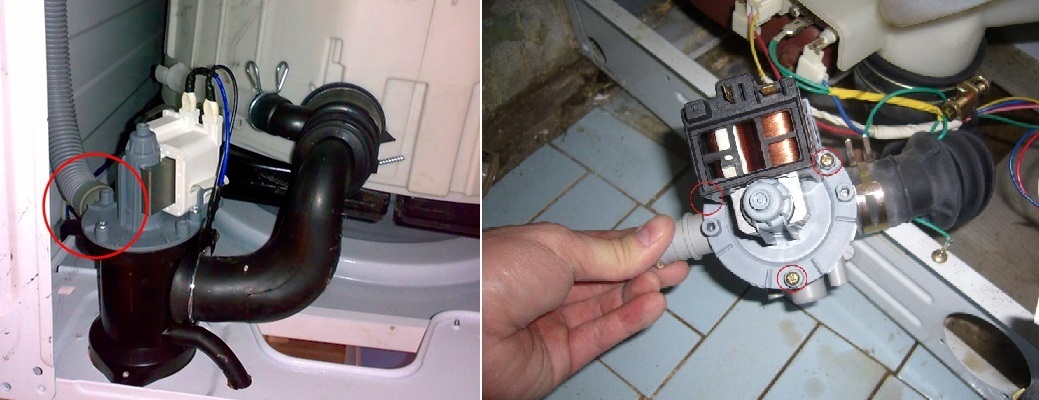
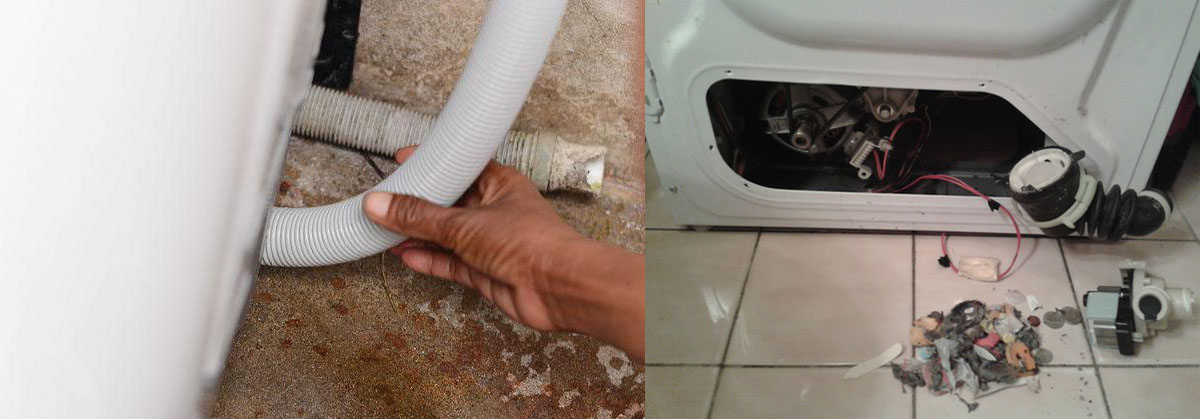



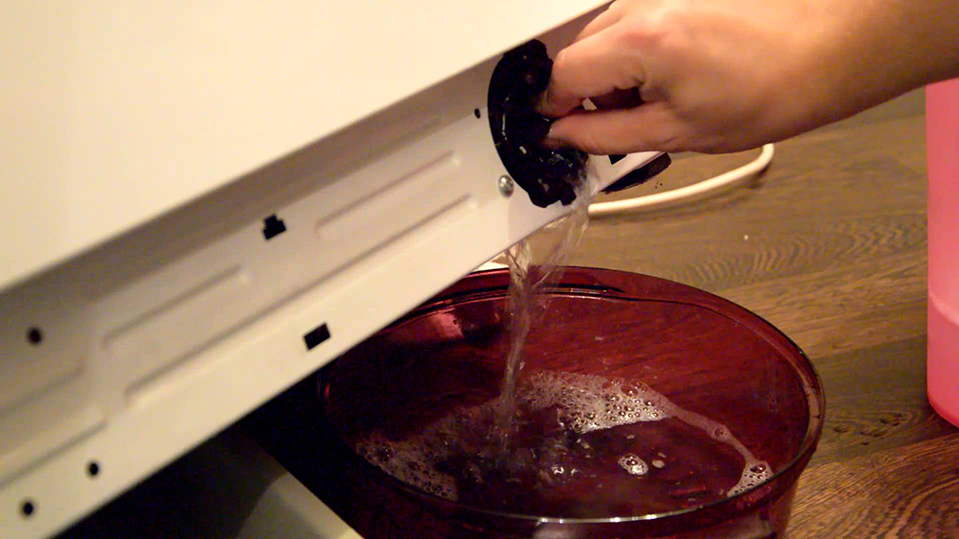
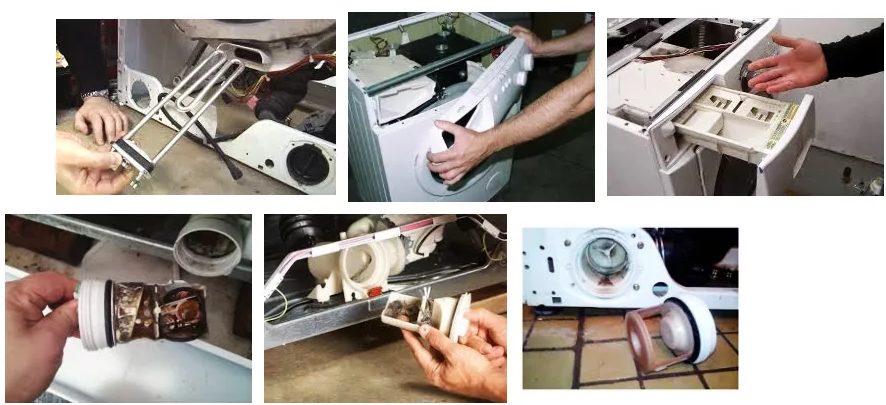
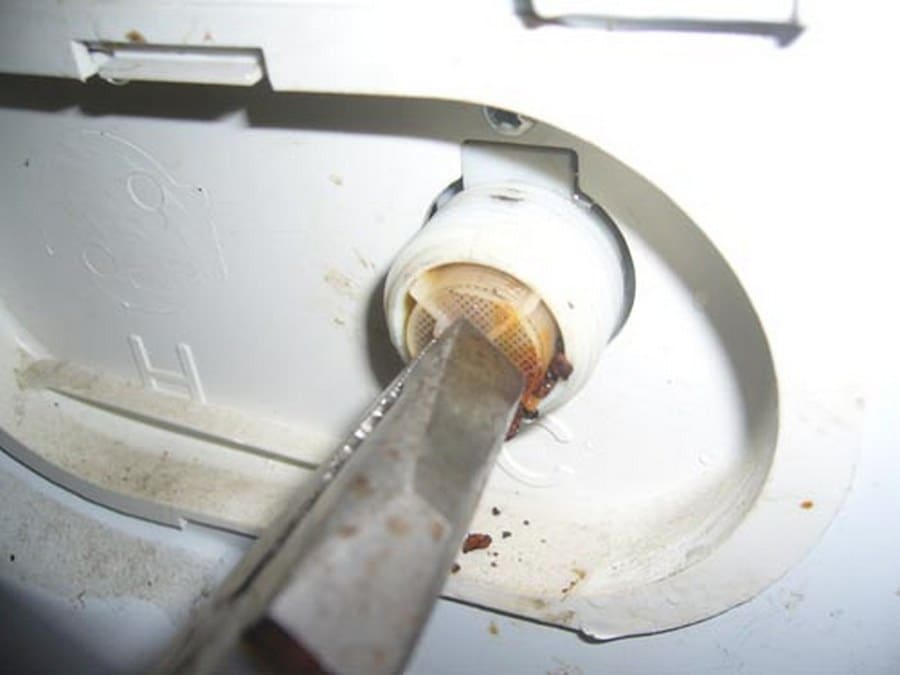
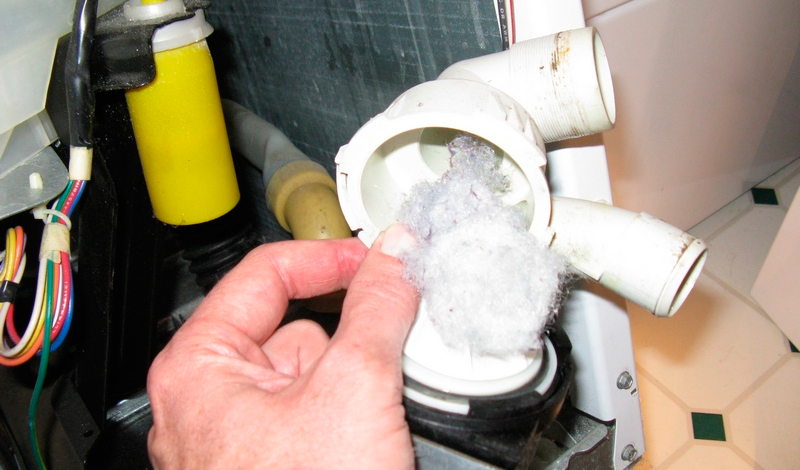


![Washing machine does not drain water - reasons and solutions - [site: name] 2stiralki.ru](https://flwn.imadeself.com/33/wp-content/uploads/e/4/7/e472ab6409813efdc73672e6e9664ef2.jpg)




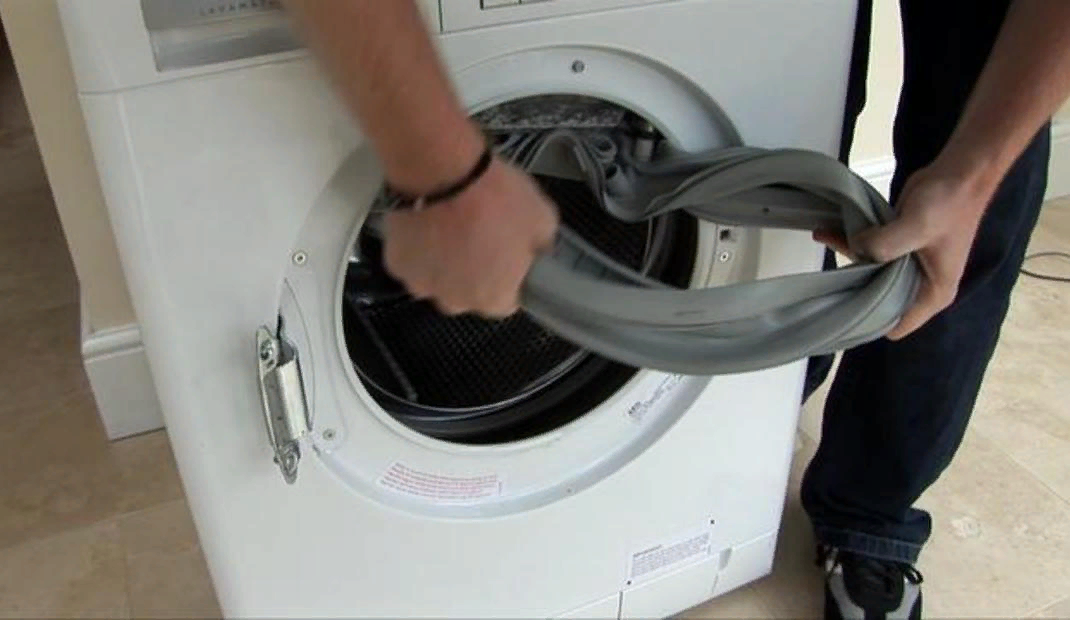
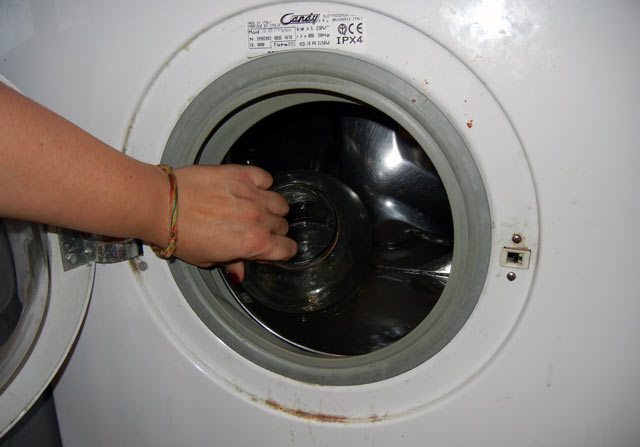

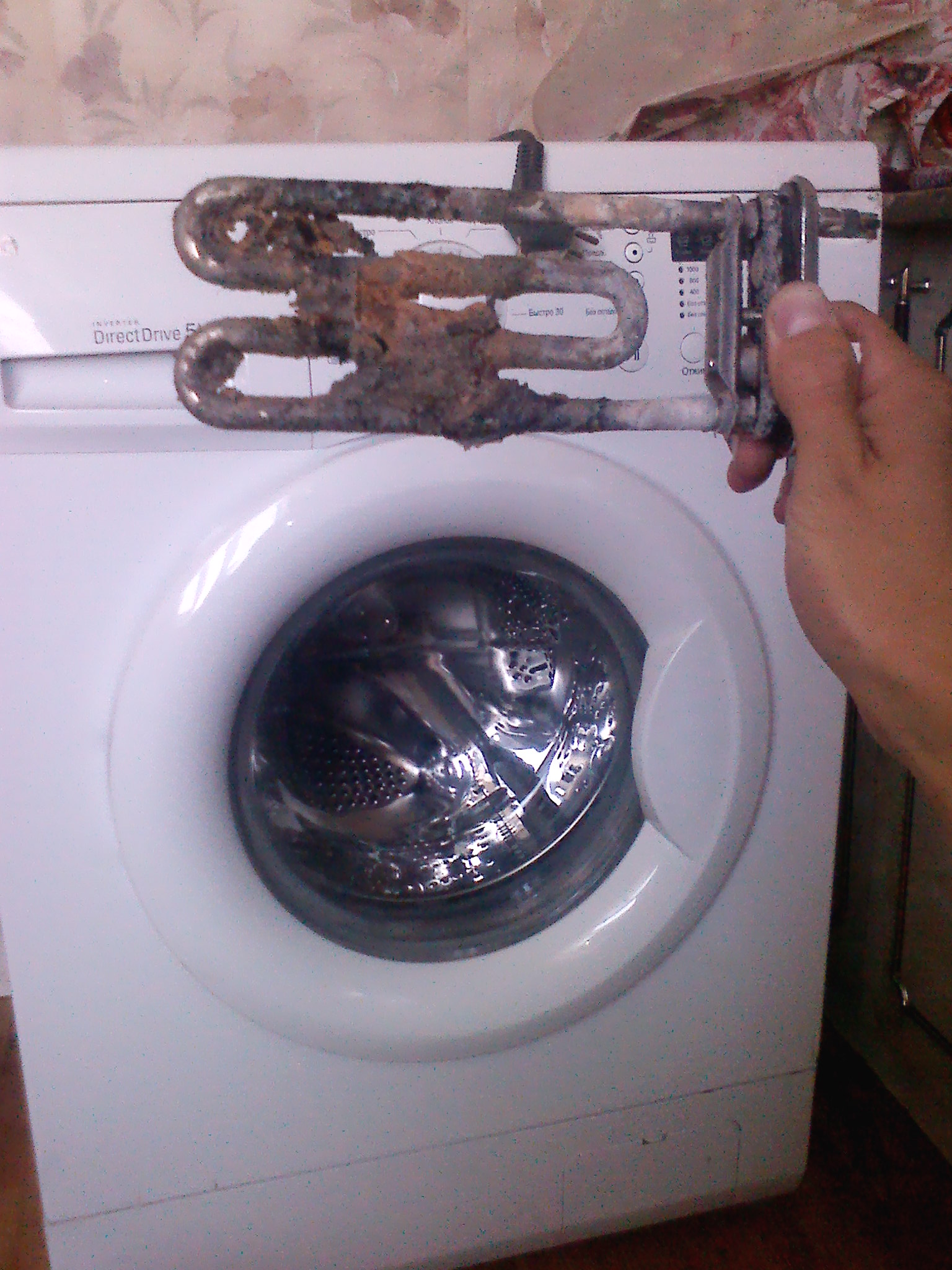
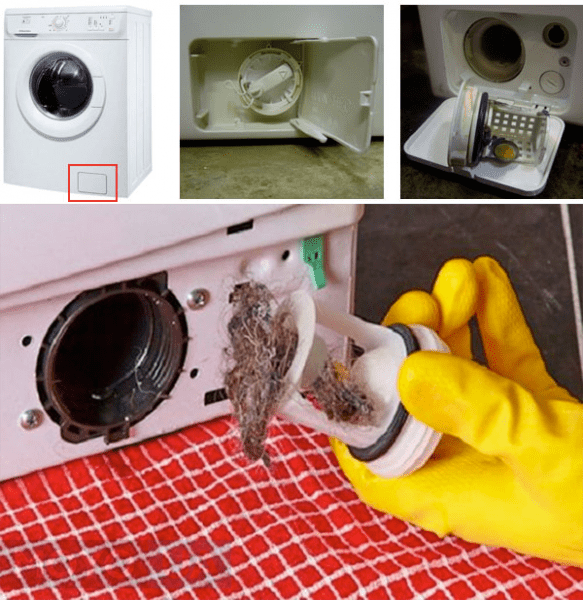


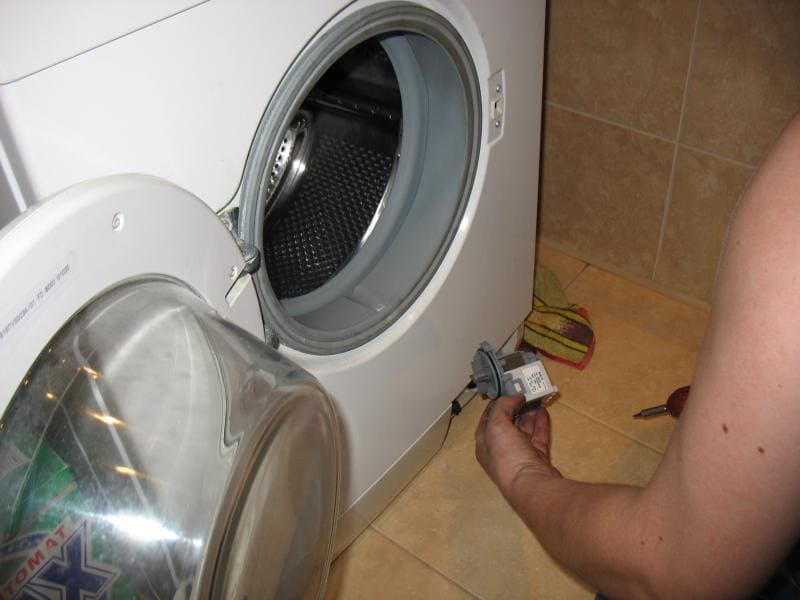

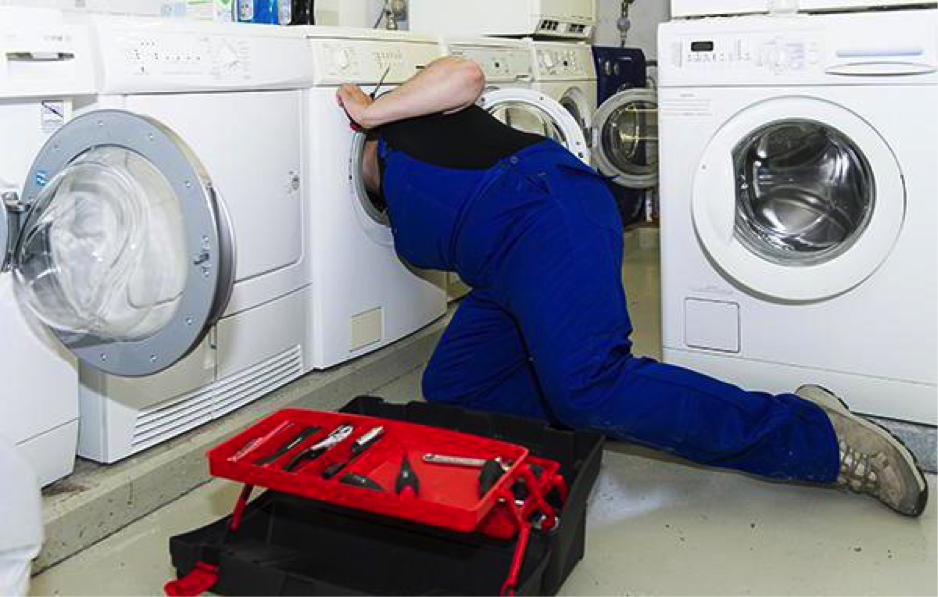

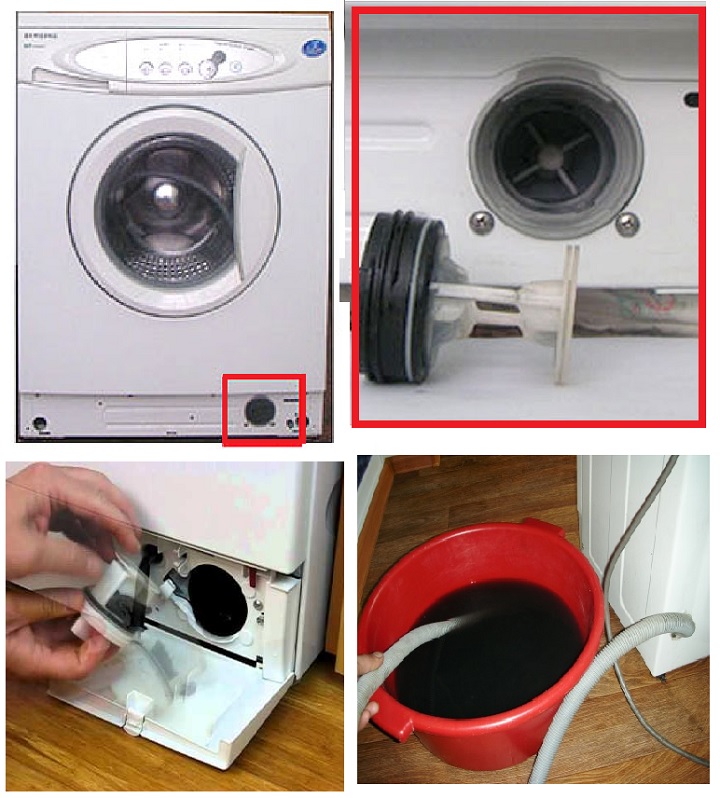
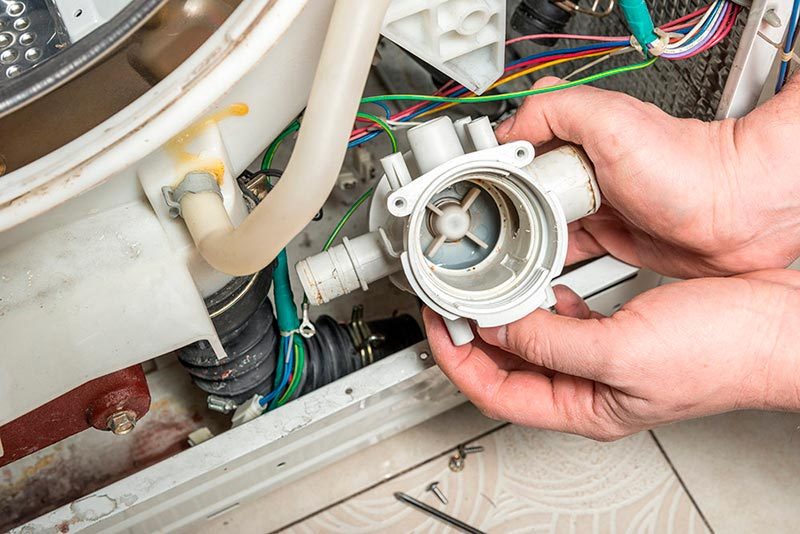



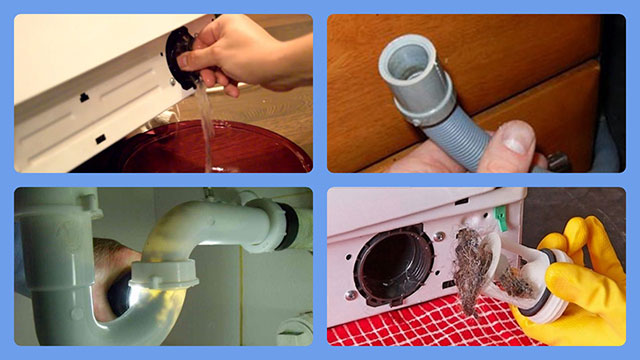
![Washing machine does not drain water - reasons and solutions - [site: name] 2stiralki.ru](https://flwn.imadeself.com/33/wp-content/uploads/3/3/a/33aa32eb14f2ec9af38e0d842718ec6a.jpg)